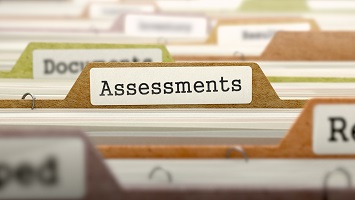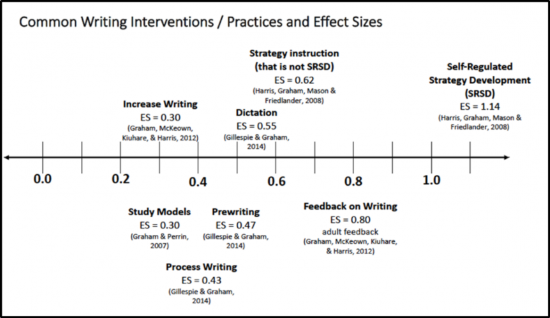These are the student outcomes that were shared in the areas of literacy, math and academic learning behaviors.
Who are we?
- Fieldstone Middle School, North Rockland CSD, Grade 7 & 8
- Pennington Elementary School, Mt. Vernon CSD, ICT Kindergarten
- Mamaroneck UFSD, 4 elementary schools, 1 middle school and 1 high school
- Carmel CSD, District-wide Elementary RtI Task Force
- Ives School, Lincoln Hall, Approved Private School, Grades 7 – 12, boys’ school
- New Rochelle City School District, District-wide
- The Garrison School, Garrison UFSD, K to 8 district
- Washington Irving Middle School, Public Schools of the Tarrytowns
- William Boyce Thompson School, Yonkers Public Schools, Pre K-6
What are the long-term outcomes for our students with disabilities that we are striving to achieve so that every student is independent and successful in school, career, and community?
- Close the achievement gap between general education students and students with disabilities
- Students are independent and have advocacy skills
- Students have Growth Mindsets and self-determination skills
- Students are fully engaged in the classroom
- Students are part of a family of learners that grow and change together
- Students are life-long readers who understand the organization and basic features of print, components of spoken and written words, and who read with purpose and understanding
- Students achieve high levels of academic performance
- Students master the Six Cs: Critical thinking, Citizenship, Creativity, Communication, Collaboration, & Compassion
- Students are upstanding, contributing & productive members of society
- Student are accountable & respectful
- Students see themselves as individuals with capabilities, ambitions and personalities
- Students wo take risks in their learning
- Students are independent and critical thinkers
- Students engage in self-advocacy and self-determined learning
- Students are lifelong learner
What outcomes have our students with disabilities already achieved?
- Significant improvements in academic and communication skills
- A narrowing of the achievement gap as evidenced from locally developed Common Assessments
- Improved scores in both DIBELS and Sight Word Assessments
- Increased independence, confidence, and motivation
- Increased social confidence and comfort in volunteering to answer/ask on task questions and express themselves
- Improved literacy and math skills,
- Greater pass rates
- Increase in number of students on Honor Roll,
- Improved reading comprehension & decoding skills
- Increased time in general education classes
- Decrease in homework refusal
- Increase in mindfulness behavior
- Increase in decoding skills and fluency, reading comprehension, demonstration of higher level thinking skills, quantity and quality of written assignments
- Increase in number fluency, conceptual understanding, success with multi-step word problems, mental computation and quality of written explanation of strategies
- Increase in engagement and participation, focus and on-task behavior,
- Increase in students’ ability to create and monitor progress toward academic and social goals and use meta-cognitive strategies
- Increase in MAP Scale scores in reading, language usage, math, or science, that often exceeded those of non-classified students
What systems and practices that were implemented to achieve our student outcomes?
- Targeted instruction, learning strategies and supports for students with disabilities through general education systems
- Explicit Instruction practices that foster growth mindsets
- Explicit and specially designed instruction in reading and math
- Common assessments to check for understanding
- Modeling and structured practice using Think Alouds
- Checklists and rubrics for independent student use in the classroom
- Self-Regulation Strategy Development (SRSD) for writing
- Collaborative planned and co-teaching using Explicitly Designed Instruction
- Focus on ensuring access to participate and progress in the general education curriculum (
- Evidence-based instruction using John Hattie’s work
- Inclusion of bilingual staff at all Instructional Support Team meetings for bilingual students
- Enhanced communication with families
- Culturally and linguistically appropriate instruction & evaluations
- Data-based decision making: Use of assessment data to inform academic planning and individual student supports
- Priority for new arrivals to be placed in dual language program
- Multi-Tiered Systems of Support (MTSS):; i.e., integrated Response to Intervention (RtI) & Positive Behavioral Interventions & Supports (PBIS)
- Analysis and use of data to inform our interventions during Data Team Meetings and MTSS meeting
- Increased teacher collaboration during intervention meetings
- Tracking of students using AIMSweb, running records, DRA and Do the Math in order to determine the effectiveness of our new model
- Provision of support for the “whole child” with additional systems for social- emotional wellness, behavior, speech, OT & PT
- Use of a points system campus-wide
- PBIS annual kick-offs and orientations for new staff and students
- Monthly PBIS Meetings
- Analysis of IEPs across the years using the Educational Benefit process
- Instruction in emotional self-regulation
- Teaching, acknowledging, and reinforcing appropriate behavior
- Community building
- Use of a trauma-sensitive approach
- Maintenance of high expectations for each student, while taking individual strengths, needs, and challenges into account
- Organization of the physical space of the classroom
- Use of multiple co-teaching models
- Teaching students classroom routines and procedures
- Purposeful Grouping based on assessment data
- Student goal setting
- Interactive data and vocabulary walls
- Use of processing time and opportunities for frequent responding through strategies like Think-Pair-Share, individual white boards, cooperative groups, and peer teaching
- Use of a uniform assessment rubric for domain specific vocabulary
What structures allowed us to support staff in implementing these systems and practices?
- Departmental curriculum work that is inclusive of Special Education teachers
- Reflection time in team meetings for teachers to develop and share strategies for all students
- Instructional support cycles to monitor and support delivery of targeted practices
- Professional development on vocabulary acquisition
- Common planning time
- Embedded coaching
- Professional development on bilingualism and best practice for ELLs
- Recruitment of teachers who are bilingual or have experience working with ELLs
- Bilingual resource guides
- Taking time to develop “buy in” from teachers, with representatives from all schools in district.
- Focus on developing collective teacher efficacy
- Creating a shared vision statement for MTSS that aligns with our district mission
- Analyzing current models and practices to identify our “bright spots”
- Scheduling
- Creation of actionable steps to improve our current systems.
- RSE-TASC trainings for PBIS Team
- Training for new members
- Frequent trainings and updates throughout the year
- Eliciting staff input through surveys
- Collegial reviews
- Turn-key of outside professional development supported by administration
- Professional development after school by colleagues
- Time for classroom inter-visitations
- Quality Improvement Process Team facilitated by RSE-TASC Special Education School Improvement Specialist
- Professional Learning Communities (PLC)
- Intellex: Learning Academic, Physical, and Social Skills Through Common Themes
- School-wide writing initiative across grade levels
- Congruence meetings of grade level and vertical teams
What are we doing next to continue working toward achieving our long-term student outcomes?
- Provide embedded academic support within student schedules:
- Implement Read 180 and Math 180 for all students who exhibit a need for skill development
- Institute an IEP driven Study Skills course for students with disabilities with Consultant Services
- Additional professional development on the difference between a language acquisition issue and a true disability
- Develop building level supports to address educational gaps of ELL students due to cultural/ linguistic differences.
- Continue professional development for teachers and support staff on working with diverse student populations
- Improve targeted supports through RtI and MTSS
- Provide resources for families on how to support children at home
- Increase efforts to hire bilingual and multicultural staff members
- Implement our philosophy of early intervention and all teachers are part of the MTSS framework
- Provide flexibility with our MTSS grouping, focusing on being equitable rather than equal
- Implement a district format for Data Team Meetings using three questions
- Add to our on-line collaboration space for MTSS and create an inventory of available interventions
- Strengthen MTSS meetings with set protocols and procedures
- Broaden our understanding of predictive, diagnostic and curriculum based measures.
- Create student binders for students to use in monitoring their own progress
- Build on staff excitement
- Create stronger data collection & data-based decision making systems to determine interventions & supports
- Continue professional development focusing on integration of practices across multi-tiered system of supports
- Focus on Problems of Practice (POP) protocol
- Increase use of the Explicit Instruction Framework in every classroom
- Strengthen writing initiative across all content areas
- Utilize “Depth of Knowledge Wheel” and/or “Bloom’s Revised Taxonomy” to increase teacher use of higher order thinking questions
If you want to learn about the specific outcomes, practices and systems implemented in each of these schools, visit the google folder at Student Outcomes Conference.
There is a folder for each school with a summary description of their work and the handouts they provided at our 2018 Student Outcome Conference.
If you would like to read similar summaries of student outcomes in other areas of performance, follow the links here:
- Behavior and social-emotional
- Self-advocacy and educational planning
- Post-secondary outcomes and employment


 Data-Driven Decision-Making
Data-Driven Decision-Making  Increasing Post-School Success through Interagency Collaboration
Increasing Post-School Success through Interagency Collaboration  How Can We Improve Deeper Learning for Students with Disabilities?
How Can We Improve Deeper Learning for Students with Disabilities?  Positive Classroom Management: Creating an Environment for Learning
Positive Classroom Management: Creating an Environment for Learning  Self-Determination Skills Empower Students of All Ages
Self-Determination Skills Empower Students of All Ages  Fidelity of Implementation: What is it and Why does it Matter?
Fidelity of Implementation: What is it and Why does it Matter?  Rethinking Classroom Assessment
Rethinking Classroom Assessment  A Three-Step Approach to Identifying Developmentally Appropriate Practices
A Three-Step Approach to Identifying Developmentally Appropriate Practices  Transforming Evidence-Based Practices into Usable Innovations: A Case Study with SRSD
Transforming Evidence-Based Practices into Usable Innovations: A Case Study with SRSD